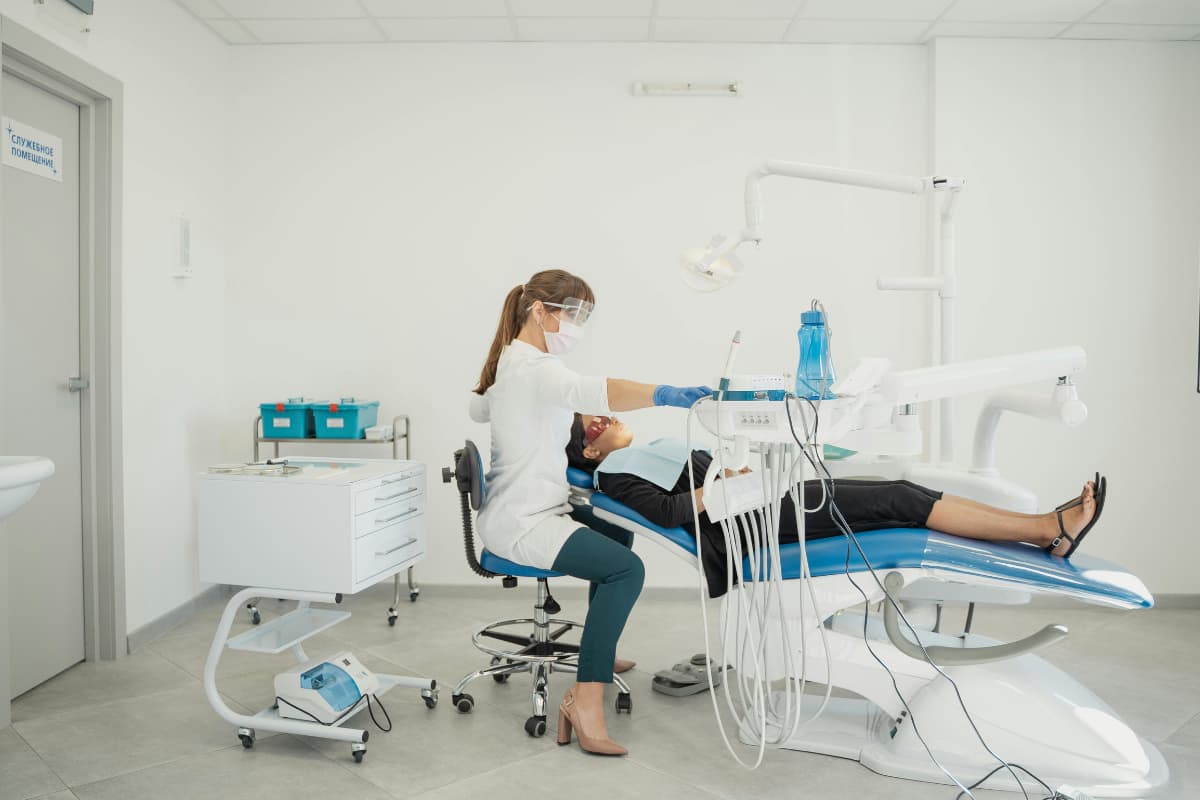Currently, only around one in three practices is barrier-free. As a result, the right to freely choose a doctor is in fact severely restricted for many people in Germany. But which barriers can hinder visiting your practice?

What barriers are there in a practical context?
In a practical context, there are many obstacles for physically or mentally handicapped people and for parents with small children. These can be divided into three categories: access to practice, use of practice rooms and communication.

Tip: You can find a checklist on the website of the German Association of Statutory Health Insurance Physicians “Is your practice barrier-free? ”
Access to practice
Getting to the practice and into the practice building can be difficult for many people. Barriers to access practice can be identified, among others, by these features:
- Unreachable by public transport
- No parking spaces suitable for the disabled
- Access to the house is only possible via stairs
- The bell is not available for wheelchair users
- No automatic door openers
- The width of the door is not wheelchair accessible
- No lift or stairlift in the stairwell
- Once in practice, there are often further barriers.
Use of practice rooms
Once in practice, there are usually further obstacles. These barriers make it difficult to use the premises:
- No disabled toilet with emergency call button
- No space for a wheelchair or stroller in the registration area, in the waiting room or in the examination rooms
- The registration desk is not suitable for wheelchairs
- No slip-resistant floor coverings
- Unsuitable examination equipment that is not height-adjustable
There may also be barriers to communication between practice staff and patients.
communications
It is not only physical obstacles that make it impossible for many patients to visit the practice. Communication is often difficult, particularly for mentally handicapped, visually or hearing impaired people and people without knowledge of German. These include:
- No alternative to making an appointment by telephone
- Staff without foreign language skills
- No informational material in easy language
- No signs or signs that are difficult to read
The list of restrictions is long, as barriers can exist almost anywhere. But what is accessibility in medical practices?
That means accessibility in medical practices
Accessibility means that all patients can visit your practice and be treated without having to rely on outside help.
Unfortunately, a completely barrier-free practice is not yet the standard. In many buildings, for example, there is no lift or parking facilities in the immediate vicinity. It is not always possible to upgrade the entire practice accordingly. Nevertheless, more and more doctors recognize the fundamental problem and are ensuring accessibility as far as possible and taking this into account when buying or building a practice in accordance with legal regulations.
Duties and regulations
There are currently few accessibility regulations for existing medical practices. However, since the Appointment Service and Care Act 2019 came into force, the associations of Statutory Health Insurance Physicians must provide information at least online about access options for people with disabilities.
The situation is different for new buildings or the conversion of existing premises.
Statutory regulation for new practice buildings and changes of use
If you are currently planning a new practice building, structural accessibility is mandatory. The model building code, which serves as a template for the state building regulations, requires barrier-free construction in particular for healthcare facilities: “Buildings that are publicly accessible must be barrier-free in the parts used for general visitor and user traffic. ”

exemptions
However, there are also restrictions here. According to § 50 paragraph 3, exceptions to the legal obligation for accessibility may be the following:
- Difficult terrain conditions
- Installing an otherwise unnecessary lift
- Unfavorable existing buildings
- Disproportionate additional expenditure
If one or more of these points apply to your project, it is possible that you are released from the obligation to comply with accessibility.
Note: If in doubt, contact the responsible building authority or a specialized lawyer at an early stage for an expert assessment.
If you are concerned about the financial investment, subsidies can provide some relief.
Funding opportunities for your practice restructuring
Are you considering rebuilding your practice so that it can be reached by even more people? Then you may benefit from various funding programs and loans. These tenders could be suitable for you:
- State of Saxony
- KfW loans
- Stiftung Gesundheit Fördergemeinschaft e.V.
- Ministry of Social Affairs, Health and Sports of the State of Mecklenburg-Western Pomerania
- State Office for Social Affairs, Youth and Welfare (Rhineland-Palatinate)
- Hessian Ministry of Social Affairs and Integration
Depending on the project, renovations can quickly become a very time-consuming task. If you want to remove barriers in the short term today, digital tools can help — for example for anamnesis.
Barrier-free anamnesis is so easy with Nelly
Thanks to Nelly, the anamnesis is easily barrier-free. This is because you can provide your patients with questionnaires and information sheets digitally in multiple languages and also in simple language. Nelly also allows you to share information — for example about accessibility in your practice — with your patients. Here's how:
- Patients enter all relevant data in the input mask.
- With one click, you can many documents and treatment contracts be signed in accordance with the law.
- All data is automatically available to you in the practice software.
Now you too can create a digital workflow in your practice. Wir advise you without obligation and free of charge to your individual case!
The personal names used in this article always refer equally to all persons. Dual naming and alternate names are omitted in order to improve readability.












